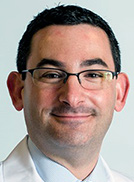Liso-cel as a preferred second line treatment for patients with primary refractory or early relapsed LBCL
The primary analysis of the TRANSFORM study confirmed the clinical benefit of lisocabtagene maraleucel (liso-cel) over standard of care in patients with primary refractory or early relapsed large B-cell lymphoma. Liso-cel resulted in statistically significant and clinically meaningful improvements in event-free survival, complete response rate and progression-free survival while overall survival numerically favoured liso-cel, despite allowing for crossover.
For patients with relapsed or refractory large B-cell lymphoma (R/R LBCL), salvage immunochemotherapy followed by high-dose chemotherapy (HDCT) and autologous stem cell transplantation (ASCT) in chemo-sensitive patients has been the standard of care (SOC) for decades. Lisocabtagene maraleucel (liso-cel) is an autologous, CD19-directed, 4-1BB chimeric antigen receptor (CAR) T-cell product. Results of a prespecified interim analysis of the TRANSFORM study, performed at a median follow-up of 6.2 months, demonstrated superior efficacy of liso-cel compared with SOC as second-line treatment for patients with primary refractory or early relapsed (within 12 months of first line therapy) LBCL. Results of the event-driven primary analysis of TRANSFORM were presented at ASH 2022, with a median follow-up from randomisation of 17.5 months.
Study design
TRANSFORM is a global, randomised, multicentre, phase III study comparing efficacy and safety of liso-cel versus SOC (R-DHAP, R-ICE, or R-GDP followed by BEAM + ASCT) in adults (aged ≤ 75 years) with LBCL primary refractory to or relapsed ≤ 12 months after first-line therapy who were eligible for ASCT. Key inclusion criteria were ECOG PS ≤ 1 and adequate organ function. Patients in the liso-cel arm underwent lymphodepletion with fludarabine/cyclophosphamide followed by liso-cel at a target dose of 100 × 106 CAR+ T cells. Bridging therapy with R-DHAP, R-ICE or R-GDP was allowed at investigator discretion. Patients in the SOC arm received 3 cycles of chemotherapy. Responding patients (CR or PR) proceeded to high-dose chemotherapy + ASCT. Crossover to receive liso-cel was allowed for patients in the SOC arm not achieving CR or PR after 3 cycles of chemotherapy, not in CR after ASCT, or demonstrating PD at any time. The primary endpoint was event-free survival (EFS) based on independent review committee (IRC). Key secondary endpoints included IRC-assessed CR rate, PFS, and OS.
Results
In total, 184 patients were randomised to liso-cel (N= 92) or SOC (N= 92). In the liso-cel arm, 63% of patients received bridging therapy and 97% of patients received their liso-cel infusion. In the SOC arm, 91 patients started platinum-based immunochemotherapy. Of them, 43 (47%) responded and proceeded to HDCT + ASCT. Sixty-one patients in the SOC arm experienced treatment failure as of the time of this analysis and were approved for cross-over to liso-cel. Patient demographics and baseline disease characteristics were generally balanced across the study arms.
With a median follow-up of 17.5 months, the median event-free survival (EFS) was not reached for the liso-cel arm and was 2.4 months for the SOC arm (HR[95%CI]: 0.356[0.243-0.522]). The 18-month EFS rate was 52.6% vs. 20.8% for liso-cel and SOC, respectively. An EFS analysis by subgroups favoured liso-cel across all subgroups. The ORR was 87% for liso-cel and 49% for SOC, with CR rates of respectively 74% and 43% (p< 0.0001). Of 26 patients with a best overall response of partial response at the interim analysis, the response deepened to CR for 9 patients at the primary analysis (6/18 in the liso-cel group, 3/8 in the SOC group). The duration of CR was not reached for liso-cel and was 9.3 months for SOC (HR[95%CI]: 0.483[0.262-0.890]). The median PFS for liso-cel and SOC were respectively not reached and 6.2 months (HR[95%CI]: 0.400[0.261-0.615], p< 0.0001). The 18-months PFS rates were 58.2% and 28.8%, respectively. Overall survival numerically favoured liso-cel, with 73.1% of patients alive at 18-months (vs. 60.6% in the SOC arm) but this difference was not statistically significant (p= 0.0987). Of note, patients in the SOC arm who crossed to receive liso-cel continue to be followed for OS in the SOC arm.
The most common treatment-emergent adverse events (TEAEs) in both arms were cytopenias. Two patients in each arm died due to TEAEs. Serious TEAEs were reported in 44 (48%) and 45 (49%) patients in the liso-cel and SOC groups, respectively. Cytokine release syndrome (CRS) occurred in 49% of patients in the liso-cel arm and was almost entirely of low grade, with only one case of grade 3 CRS and no grade 4-5 events. The incidence of neurologic toxicity was low at 11%. Persistence of liso-cel was observed up to 23 months after infusion, with follow-up ongoing. Cellular kinetics for the crossover subgroup were similar to those of the liso-cel group.
Conclusion
With a median follow-up of 17.5 months, the primary analysis of the TRANSFORM study confirmed the superiority of liso-cel over SOC in patients with primary refractory or early relapsed LBCL. Liso-cel resulted in significant improvements in EFS, CR rate and PFS. Overall survival numerically favoured liso-cel, despite allowing for crossover. Furthermore, the incidence of CAR-T cell therapy-specific adverse events was manageable and consistent with previous studies of liso-cel. These data support the use of liso-cel as a preferred second line treatment for patients with primary refractory or early relapsed LBCL.
Reference
Abramson J, et al. Lisocabtagene Maraleucel (liso-cel) Versus Standard of Care (SOC) with Salvage Chemotherapy Followed By Autologous Stem Cell Transplantation (ASCT) As Second-Line (2L) Treatment in Patients with Relapsed or Refractory Large B-Cell Lymphoma (LBCL): Primary Analysis of the Randomized, Phase 3 Transform Study. Presented at ASH 2022; Abstract 655.

